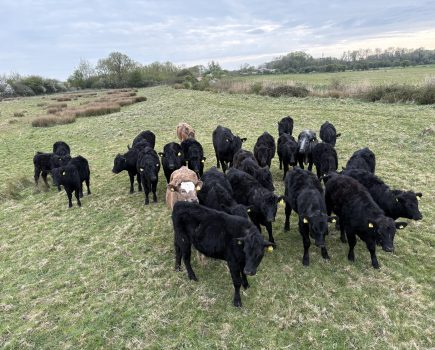On 31 May, November 2023 wheat futures were down to £180, and by the third week of June they reached £201. So, my advice at the end of May to “sit tight and watch the weather” has proved to be correct.
There are a few weather concerns and, as I said last month, they will continue to drive the market in the short term, rather than the war in Ukraine. The biggest potential problem is with American maize. This week, 64% of the crop is officially in drought and in some states the figure is 82%. Traders are now asking: Is this another 2012?
Apart from the Ukrainian War, the 2012 corn crop disaster caused the biggest sudden rise in prices most of us have seen. At a similar stage, the 2012 crop was only 37% in drought, but it got a lot worse. July is the month when the maize crop is made or not, so there is time for it to improve. Yield has already been impaired, but to what extent?
Closer to home, Scandinavia planted its spring malting barley crop late. It had little rain in May and in much of June, although there was some at the end of the month, but it is estimated that yields in Denmark could be 25% down. This is very good news for UK malting barley growers. Our prices based on following the Danish export market rose £30 per tonne in the last few weeks of June. Most farmers had sold nothing; now they have begun to put a line in the sand at huge premiums of anything up to £65 per tonne over feed barley.
In the south, the early planted spring barley has benefitted from good rain in the second half of June. Chalkland barley has the potential to repeat last year’s yield, something I would not have thought possible with the slow growing wet and cold spring we had. But there is a long way to go. We have had the hours of sunshine we needed and anything can happen yet on quality or yield, but with no demand for old crop malting and big carry overs of beer, malt and barley, this was a welcome spike in price and a percentage should be sold at those values. Actually, despite the rise in wheat prices it is probably still the only forward crop you can sell at a margin above the cost of production.
So new crop wheat is back to £200, which is a start, but I think, if you can, you will need to play the long game when marketing feed grain. Despite the quality risk, selling milling wheat and malting barley is more attractive.
It’s mind over matter where the Black Sea corridor is concerned. “We don’t mind because it doesn’t matter anymore.” Whether it stays open or shut in July, we will still have the same mountain of barley and wheat exports issuing forth from Russia and the Ukraine by ship, road and rail through July, August and September.
The UK does not want to be competing with that over those months, so avoid spot selling at harvest. We have the huge open mouth of drought-ridden Spain on our doorstep. Yes, Russia will be selling to them as well, but we will have the edge in the long run. So your marketing prospects have improved as a result of other people’s potential misfortune.
We must not forget that even after a recent rally we are still a lot closer to the bottom of the long term trends. As I said a year ago, the war time peaks won’t return, but at a base of £200 for wheat, there is plenty of room for improvement.
India may yet be an importer of wheat rather than an exporter. Canada and South America are dry, Germany has suffered storms which may have impaired its wheat crop and we know that Australia will have nothing like the wheat crop it had last year. After three poor to average wheat harvests, the world needed a big wheat crop this year to re-build stocks, but right now I don’t see where that is coming from.







